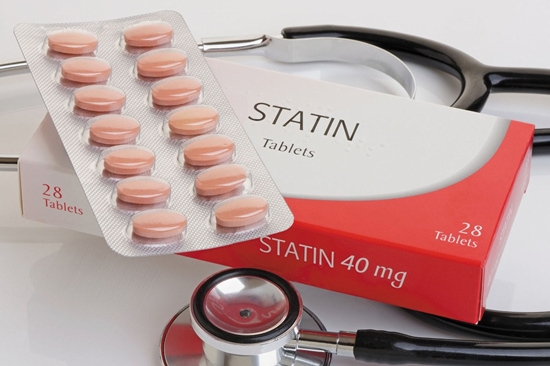مروری سیستماتیک و متاآنالیز
ایمنی و اثربخشی استاتینهای با شدت بالا در مقابل استاتینهای با شدت کم و متوسط به همراه Ezetimibe در بیماران مبتلا به بیماریهای قلبی و عروقی آترواسکلروتیک برای دستیابی به اهداف LDL-C
افزودن Ezetimibe به عنوان یک داروی کاهنده کلسترول به استاتینهای با شدت کم یا متوسط و تأثیر آن بر کارایی درمان و ایمنی بیماران مبتلا به بیماری قلبی عروقی آترواسکلروتیک (ASCVD) در مقایسه با رژیمهای استاتین با شدت بالا همواره موضوع بحث برانگیزی بوده است.

فرضیه اولیه این مقاله مطرح می کند که آیا استفاده ترکیبی از استاتینهای با قدرت کمتر همراه با Ezetimibe عملکرد بهتری از استاتینهای با قدرت بالاتر به تنهایی برای افراد مبتلا به بیماری قلبی دارد یا نه. محققان دریافتند که ترکیب این دو دارو، کلسترول بد (LDL-C) را بیشتر از استاتینهای با قدرت بالا به تنهایی کاهش میدهد. همچنین باعث درد عضلانی کمتری شده و در نتیجه افراد کمتری درمان خود را به دلیل عوارض جانبی قطع می کنند. با این حال، بررسی های انجام شده شواهدی مبتنی بر اثر بیشتر درمان ترکیبی بر کاهش خطر ابتلا به مشکلات عمده قلبی را نسبت به استاتینهای با قدرت بالا به تنهایی و بدون همراهی با داوری دیگر نشان نداد. نویسندگان پیشنهاد می کنند که درمان ترکیبی ممکن است گزینه خوبی برای مدیریت کلسترول در افراد مبتلا به بیماری قلبی باشد، اما تحقیقات بیشتری برای درک کامل مزایای آن بر پیامدهای سلامت قلب مورد نیاز است.
Safety and Effectiveness of High-Intensity Statins Versus Low/Moderate-Intensity Statins Plus Ezetimibe in Patients With Atherosclerotic Cardiovascular Disease for Reaching LDL-C Goals: A Systematic Review and Meta-Analysis
Abstract
Background: It remains controversial whether adding ezetimibe to low/moderate-intensity statins has a more beneficial impact on the treatment efficacy and safety of patients with existing atherosclerotic cardiovascular disease (ASCVD) compared to high-intensity statin regimens.
Hypothesis: A combination of low/moderate-intensity statins plus ezetimibe might be more effective and safer than high-intensity statin monotherapy.
Methods: We searched databases for randomized controlled trials comparing lipid profile alterations, drug-related adverse events, and MACE components between high-intensity statin monotherapy and low/moderate-intensity statin plus ezetimibe combination therapy. Pooled risk ratios (RR), mean differences (MD), and 95% confidence intervals (95% CI) were estimated using a random-effects model.
Results: Our comprehensive search resulted in 32 studies comprising 6162 patients treated with monotherapy against 5880 patients on combination therapy. Combination therapy was more effective in reducing low-density lipoprotein cholesterol (LDL-C) levels compared to monotherapy (MD = -6.6, 95% CI: -10.6 to -2.5); however, no significant differences were observed in other lipid parameters. Furthermore, the combination therapy group experienced a lower risk of myalgia (RR = 0.27, 95% CI: 0.13-0.57) and discontinuation due to adverse events (RR = 0.61, 95% CI: 0.51-0.74). The occurrence of MACE was similar between the two treatment groups.
Conclusions: Adding ezetimibe to low/moderate-intensity statins resulted in a greater reduction in LDL-C levels, a lower rate of myalgia, and less drug discontinuation compared to high-intensity statin monotherapy in patients with existing cardiovascular disease. However, according to our meta-analysis, the observed reduction in LDL-C levels in the combination group did not correlate with a reduction in MACE compared to the high-intensity statin group.
Keywords: atherosclerosis; ezetimibe; meta‐analysis; statin; systematic review.
© 2024 The Author(s). Clinical Cardiology published by Wiley Periodicals, LLC.


.png)
.png)
ارسال نظر